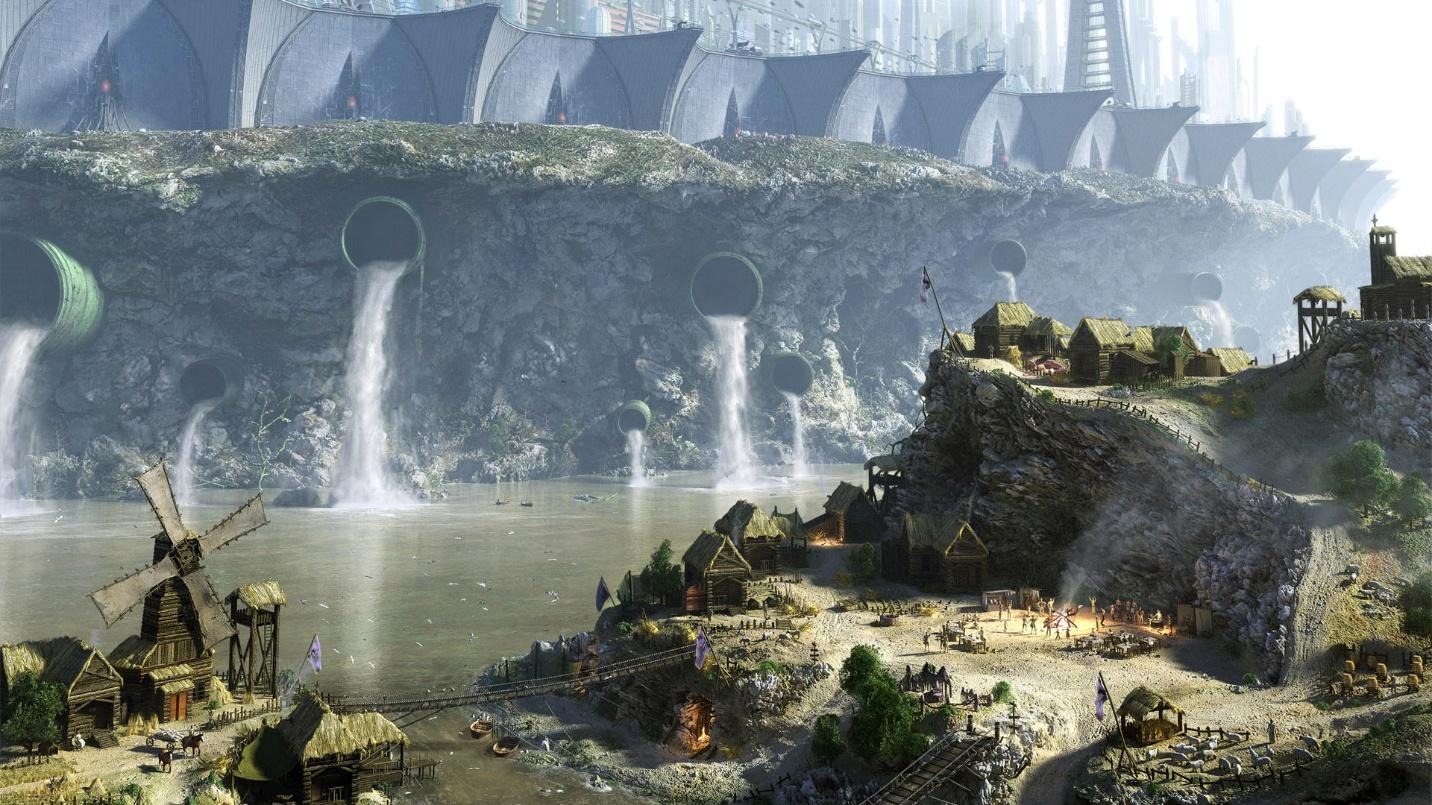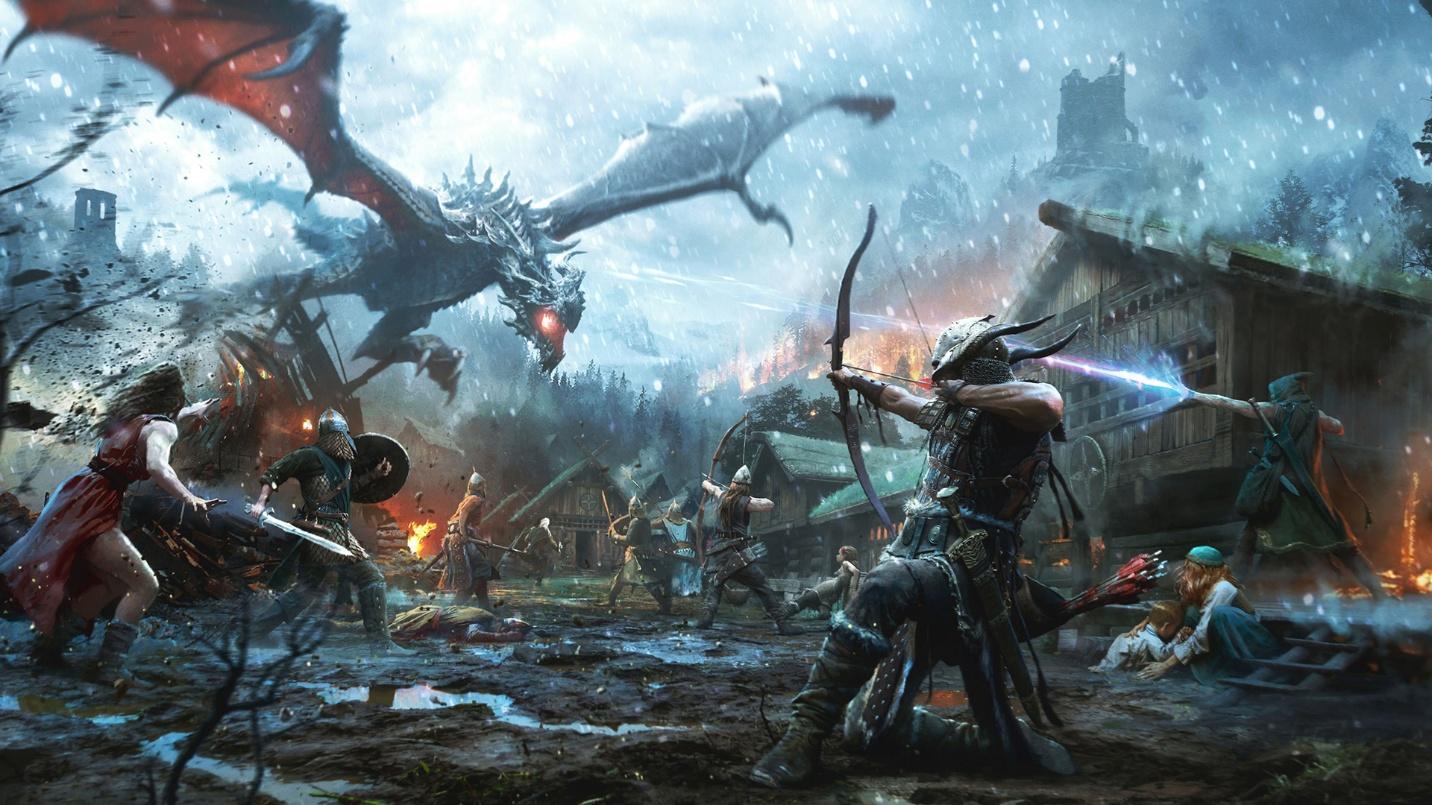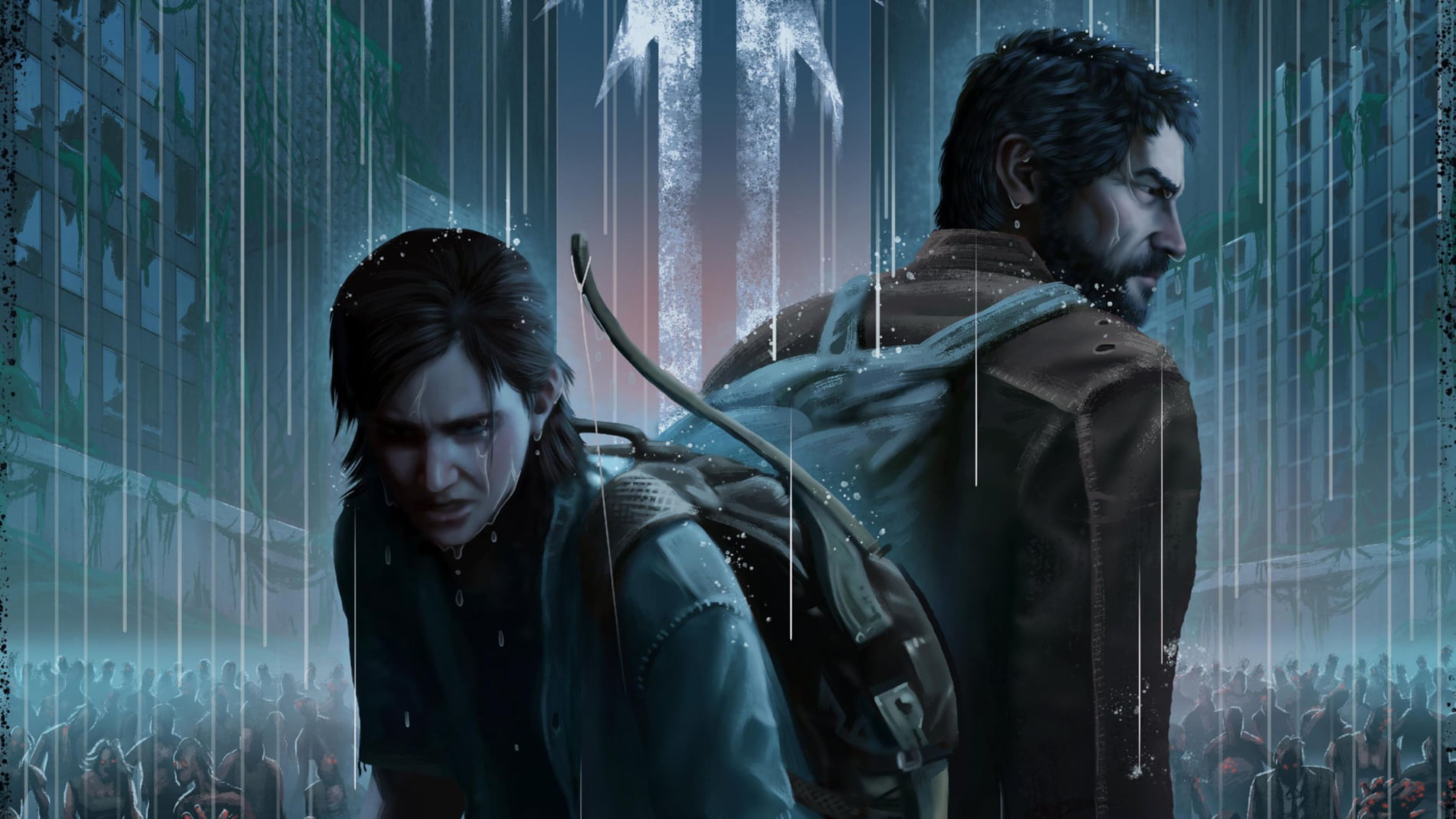Have you ever lost track of time diving into a game’s story so compelling, so immersive, that you swore you could smell the rain falling on cobbled streets, hear the distant cries of NPCs, and feel their fear or joy as your choices shaped their world? Video game narratives are no longer the linear tales of old. They’ve evolved into sprawling, emotionally charged experiences that engage us far beyond the screen—and they continue to push boundaries even further. But as we race toward increasingly dynamic storytelling, we’re left wondering: how much further can immersive narratives go? Can future games pull us so deeply into their worlds that the line between virtual and reality becomes even blurrier—and what would that even look like? Dive with us into this exploration of narratives in modern video games and discover how they continue rewriting what storytelling means in gaming.

- By combining world-building, character depth, and emotional engagement, games create experiences where players feel truly part of the story.
The Rise of Immersive Narratives in Modern Video Games
Video game stories these days aren’t just stories – they pull you right in, making you feel stuff and letting your choices change what happens. With cool tricks like stories that branch out and worlds that tell their own tales, plus all the new tech, it makes you wonder: how much more real can these game stories get, and what’s next for how we experience them?
What Defines Immersive Narratives in Gaming?
Immersive narratives aren’t simply about great stories; they’re about how those stories intertwine with gameplay to pull players into a world. Imagine the difference between reading a novel and living one. In video games, it’s not just about what happens; it’s about how the player feels and reacts as events unfold based on their actions.

- With cinematic storytelling, rich dialogue, and emotional stakes, the game blends treasure-hunting thrills with heartfelt character development.
Unlike passive storytelling experiences like movies, immersive game narratives make players active participants, placing them as heroes, villains, or witnesses to dynamic events. Whether it’s making morally gray decisions in Detroit: Become Human or simply exploring every inch of Gone Home’s cluttered house to uncover its haunting story, narrative immersion is about creating a deep emotional connection that bridges the gap between player and world.
The Evolution of Narrative Immersion
The journey from simple 8-bit narratives to fully cinematic ones has been fascinating. Early story-driven games like The Legend of Zelda or Final Fantasy VII built unforgettable worlds through basic but impactful plots, shaping the early narratives in modern video games. These games sparked our imaginations, but interaction with their stories was limited to pre-scripted moments. Fast forward to titles like The Witcher 3, where every choice feels urgent, meaningful, and consequential—suddenly, narratives weren’t just designed to unfold; they were shaped entirely by the players themselves.

- It blends nostalgia with bold narrative changes, introducing new mysteries that reshape the fate of Cloud and his companions.
This evolution—from fixed scripts and text adventures to dynamic storytelling with adaptive worlds—reveals just how far we’ve come in narrative design. And yet, game developers are still asking the same question we are: How much more immersive can these stories really get?
Techniques Modern Games Use to Enhance Narrative Immersion
Video games have discovered several ways to pull players deeper into their stories, each more impressive and engaging than the last. Let’s unpack five standout methods and their real-world examples:
1. Branching Narratives and Player Choice
Who doesn’t love feeling like their choices matter? Games like Detroit: Become Human, The Witcher 3, and Life is Strange use branching narratives to let players choose their path—and live with the consequences. In The Witcher 3, a casual conversation with a village blacksmith might trigger an entirely new questline, influencing not only the local region but ripple effects across the world. These games ensure players feel like architects of their own stories.

- With morally complex quests, deep lore, and emotionally driven storytelling, it sets a benchmark for narrative in open-world RPGs.
While branching narratives in modern video games offer deep personalization, they also come with challenges—developers need to account for dozens of possibilities while keeping the story coherent. This is a feature we adore for its replay value, but appreciate even more for the sense of agency it creates.
2. Environmental Storytelling
All players who have traversed the art deco ruins of Rapture in BioShock experience the concept of environmental storytelling firsthand. The lonely adult toy that stands in a shattered apartment conveys an entire narrative without requiring verbal explanation. Through careful environmental detection, players can reconstruct the game narratives in both Gone Home and Dark Souls. The placement of notes alongside hidden items within the game converts detectives into players and reveals discovery as part of their experience.

- Through subtle details like abandoned homes, blood trails, or graffiti, players piece together events and emotions that deepen immersion and world-building.
Instead of traditional exposition, NPCs present a scenario that prompts players to pursue their own interpretations of the narrative through investigation. The ability to live stories directly through this approach provides satisfaction, which maintains our fascination since our experience involves active participation.
3. Character-Driven Narratives
First and foremost, great tales emerge from characters whose complexity, along with emotional depth, propels storytelling. The gaming experience reaches new heights when games like The Last of Us and Red Dead Redemption 2 devote significant efforts to developing their characters. The Last of Us Part II from Naughty Dog takes its characters and players on a journey through morally ambiguous scenarios, which compel them to confront revenge and forgiveness while clarifying righteousness within the context of these narratives in modern video games.

- Its slow-burn narrative, rich dialogue, and emotional depth make it one of the most cinematic and heartfelt tales in gaming history.
These games achieve distinction through their character development which produces powerful bonds both between Joel and Ellie and between Arthur Morgan and his redemption journey. We who play experience these characters through our control while feeling both devotion and sadness as well as deep loss.
4. First-Person Perspective and Embodiment
Video games take on an entirely different emotional resonance when players switch into protagonist roles through literal-minded controls in gaming world settings. Firewatch, alongside Half-Life: Alyx, uses first-person perspectives to immerse players through literal game character embodiment. The gaming experience shifts from observer to participant when we step into the narrative because we directly feel the ups and downs to the same extent as characters do.

- Blending science fiction, mystery, and alien horror, the series builds tension and lore organically through gameplay and world design.
This perspective isn’t only about visuals; it’s also about how games involve all our senses. From the heavy breathing during a tense firefight in Half-Life: Alyx to the eerie quiet of Wyoming’s wilderness in Firewatch, these games show how perspective and atmosphere go hand-in-hand.
5. Dynamic Worlds and Reactive NPCs
Dynamic game environments and NPCs that genuinely react to player actions are one of the most exciting aspects of narratives in modern video games. Take Red Dead Redemption 2: its world feels alive because NPCs remember interactions. Help a stranger at a campsite today, and they might greet you when you visit town tomorrow.

- From blood-stained cabins to eerie cave paintings, every corner of the map offers clues and mysteries.
This innovation blurs the line between mere gameplay mechanics and storytelling. It’s as if you’re not just playing a game but stepping into a world where your actions, big or small, leave an indelible mark.
Technological Advancements Shaping the Future of Narrative Immersion
The present might feel groundbreaking, but emerging technology is pushing storytelling even further. Let’s imagine where immersive narratives could go with new tools at game developers’ disposal.
1. Virtual Reality (VR) and Augmented Reality (AR)
If you’ve played Half-Life: Alyx in VR, you’ve already had a glimpse of how virtual reality transforms immersion. VR doesn’t just tell a story—it surrounds you with it, forcing you to physically engage with the world. You’re no longer an observer but an active participant, interacting with objects and characters in ways standard screens can’t replicate.

- Every detail, from scribbled warnings to shattered glass and blood trails, turns the world into a living narrative.
Augmented reality (AR) takes things a step further, blending the virtual and real worlds. Imagine walking through your city, and as you hold up your AR device, you uncover hidden layers of a game’s narrative lurking in familiar spaces. Urban-based AR storytelling could turn everyday squares and streets into theaters of mystery and adventure!
2. Advanced Artificial Intelligence (AI)
The future of storytelling within narratives in modern video games hinges on how intelligent NPCs can become. Currently, AI allows for reactive characters, but imagine conversational NPCs that can hold unique, unscripted interactions with each playthrough. Games like The Elder Scrolls V: Skyrim hint at this potential, but future AI could create characters that remember your history and adjust their behavior while dynamically evolving the story. Imagine an NPC ally who truly adapts to your morality, your failures, and your triumphs.

- From ancient prophecies to political intrigue, its open-world design allows players to uncover countless layered tales.
3. Haptic Feedback and Sensory Immersion
Beyond visuals and sound, gaming technology is beginning to involve other senses. Haptic suits and motion controllers are already gaining traction. You could feel the tension of drawing a bowstring as your hands tremble under the weight, or experience a sudden jolt when a bullet grazes your shoulder. Adding tactile immersion could bridge the gap between digital storytelling and physical reality.
4. Machine Learning and Tailored Experiences
Machine learning could bring personalized storytelling to entirely new heights. Picture a game that analyzes your decisions, your fears, and even your emotional state (via wearable tech!) to craft a narrative precisely tailored to you. A horror game might adapt to trigger subtle personal phobias, while an RPG could adjust dialogue and plot arcs based on your choices, ensuring no two playthroughs are ever the same.

- While known for its multiplayer, the game’s campaign delivers cinematic action and intense set-pieces that highlight the chaos of war.
The Challenges of Pushing Narrative Immersion
While the future of narratives in modern video games looks exciting, there are several hurdles to consider when it comes to developing even more immersive narratives.
1. Technological Limitations
While advancements in VR, AI, and machine learning are thrilling, they come with technical challenges. VR systems still face issues like motion sickness, and realistic AI systems require immense processing power, which most current gaming platforms can’t handle efficiently. The complexity of AI-driven dynamic narratives requires significant computational resources, making it difficult to implement on many current systems.

- With deep character arcs, player-driven choices, and the haunting presence of Johnny Silverhand, its narrative explores what it means to be human in a digital age.
2. Development Costs and Time
Crafting expansive, immersive narratives takes time, money, and dedicated teams. Games like Cyberpunk 2077 demonstrated how ambitious projects can run into delays and bugs if resources aren’t managed correctly. As games become more expansive, developers must integrate narratives, environments, and character interactions seamlessly, which often demands substantial resources and time. The more immersive a narrative gets, the more demanding it becomes for developers to test, polish, and maintain.
3. Balancing Immersion with Gameplay
Deep narratives are captivating, but they shouldn’t overshadow gameplay. Striking the right balance between narrative and gameplay is critical; an overly immersive story risks alienating players who prioritize action over reflection. Developers need to ensure that storytelling enhances, rather than detracts from, the fun.

- Every bloodstain, child’s drawing, or scrawled message adds emotional weight, enriching the world without a single spoken word.
4. Ethical Concerns in Immersion
Games are becoming so realistic that they can blur the line between reality and simulation, raising ethical questions about their psychological effects. For example, deeply emotional or morally challenging games might leave lasting impacts on players, especially if the boundaries between fiction and personal experience become too thin. Games like The Last of Us Part II and Spec Ops: The Line highlight the psychological effects of deeply immersive narratives in modern video games, especially when moral ambiguity and emotional conflict are central to the experience.
The Impact of Immersion: Why It Matters
Why do we care so much about making games this immersive? Because great narratives do more than entertain—they make us feel, connect, and understand. An immersive story becomes personal, sparking empathy for characters and leaving lasting impressions. We’ve all walked away from certain games—The Last of Us, Mass Effect, Undertale—remembering not just the gameplay but the experiences, lessons, and emotions they instilled in us.
Immersive narratives elevate games from simple entertainment to transformative art. They challenge us to think, feel, and connect deeply with worlds that aren’t real but seem as tangible as our own.

Final Reflections: The Future of Immersive Storytelling
The age of immersive game narratives has only just begun. While games today already weave rich, compelling stories that pull us into their worlds, emerging technologies like VR, AI, and haptics hold even greater promise. Imagine stepping into dynamic worlds where no two stories are alike, worlds where the story is shaped entirely by you. As we look ahead, the potentials of narratives in modern video games feel limitless. And while there are certainly challenges, we’re optimistic that the future of video game storytelling is brighter, deeper, and more meaningful than ever before. Where will immersive narratives go next? Only time—and a bit of technology—will tell.
Read Gamerative’s inside gaming features where you can find opinions and analysis right out of the video game’s world.
FAQs About Immersive Narratives in Video Games
1. Can narrative immersion work in multiplayer games?
Yes! Many multiplayer games, like Sea of Thieves and Destiny 2, use shared storytelling to involve players in evolving worlds. These games allow for both personal and group narratives as players shape the environment together.
2. Do immersive narratives limit replayability?
Not necessarily. Games like The Witcher 3 and Detroit: Become Human use branching narratives to ensure multiple playthroughs offer different experiences, with new decisions and outcomes each time.
3. How is AI changing video game storytelling?
AI powers dynamic NPCs that react more naturally to player actions. In the future, AI could enable evolving, unscripted storylines tailored to each player’s choices.
4. Are there limits to how immersive game stories can be?
While technology is a bottleneck right now, future challenges could include ethics, costs, and the risk of overwhelming players with hyper-real emotional experiences. Balancing immersion with accessibility will be key for future games.




